INTERVIEW WITH DOMENICO CALARCO
Mariapia Ciaghi
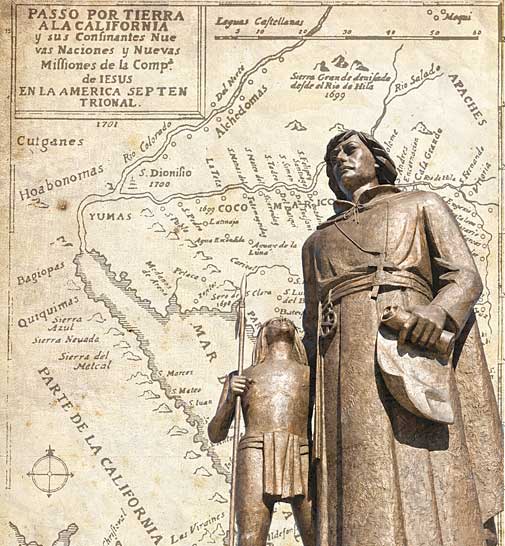
Mariapia Ciaghi. He was one of the founders of Arizona, the state which in 1965 placed a bronze statue of Father Chini in his honour in the National Statuary Hall of the Capitol in Washington; two Mexican cities in the state of Sonora remember him in their names: Bahía Kino and Magdalena de Kino. But few know that Eusebio Francesco Chini (1645-1711), a Jesuit scientist and missionary among the Pima Indians of Arizona in the late seventeenth and early eighteenth century, was born in Trentino, and was an extraordinary man of peace and culture. What characterised this "man with a heart on fire”? What drove him to leave Val di Non and take him to Mexico?
 Domenico Calarco. Eusebio Kino was born in Segno in Val di Non, on 10 August 1645, to Margherita Lucchi and Francesco Chini. He was baptised the same day in the parish of Torra and registered with the surname of his father that he was to change in America to Kino to avoid mispronunciation or misunderstanding. He started schooling in Segno with a private tutor; he attended high school in the Jesuit college at Trento and completed his studies at the University of Hall, near Innsbruck, showing a particular aptitude for natural sciences and mathematics. Having recovered from a serious illness after invoking St. Francis Xavier, and taking a vow to become a Jesuit and a missionary, he studied logic, philosophy and theology at the universities of Ingolstadt, Freiburg and Monaco. On 12 June 1677, he was ordained a priest at Eichstätt in Bavaria. Despite his ardent desire to be sent to China, in March 1678 he was sent to the West Indies and specifically to the missions of New Spain in Mexico. On 12 June 1678, he sailed from Genoa with eighteen other Jesuit missionaries, bound for Cadiz, the port of embarkation of the Spanish royal fleet for the Americas. Various setbacks kept him for nearly three years in Seville, and he reached his overseas destination on 3 May 1681. Domenico Calarco. Eusebio Kino was born in Segno in Val di Non, on 10 August 1645, to Margherita Lucchi and Francesco Chini. He was baptised the same day in the parish of Torra and registered with the surname of his father that he was to change in America to Kino to avoid mispronunciation or misunderstanding. He started schooling in Segno with a private tutor; he attended high school in the Jesuit college at Trento and completed his studies at the University of Hall, near Innsbruck, showing a particular aptitude for natural sciences and mathematics. Having recovered from a serious illness after invoking St. Francis Xavier, and taking a vow to become a Jesuit and a missionary, he studied logic, philosophy and theology at the universities of Ingolstadt, Freiburg and Monaco. On 12 June 1677, he was ordained a priest at Eichstätt in Bavaria. Despite his ardent desire to be sent to China, in March 1678 he was sent to the West Indies and specifically to the missions of New Spain in Mexico. On 12 June 1678, he sailed from Genoa with eighteen other Jesuit missionaries, bound for Cadiz, the port of embarkation of the Spanish royal fleet for the Americas. Various setbacks kept him for nearly three years in Seville, and he reached his overseas destination on 3 May 1681. 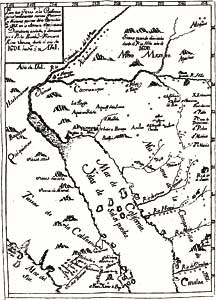 In the early years (1683-1685), he worked as a missionary with ups and downs in Lower California, before being sent to Pimería Alta, a region straddling the state of Sonora (Mexico) and Arizona (USA), which he reached on 13 March 1687. Pimería Alta was considered "the extreme northern outpost of Christianity", with a population of about thirty thousand inhabitants with different characters and morals. For nearly 24 years, Pimería Alta became the field of Father Chini’s apostolate. There he founded 27 missions, promoted the construction of 19 farms and made 50 expeditions/explorations, travelling on horseback or by mule or on foot over about 30,000 km, opening up new trails and making accurate scientific surveys of the region. A man rich in talent, Father Chini was a defender and promoter of the human rights of the natives, and above all, an apostle, witness and servant of the mission of Christ, hope of the world. For Father Chini, walking through the desert was not an escape from men but an important part of his spiritual journey, that is a decisive moment of maturation of his choices and for coming into contact with "the God who saves". Father Chini made his daily journey a song of faith in God. attracted by the "burning bush”, his soul was eager to enjoy the warmth of God, "God as fire, as sun, as light", and he longed to remain increasingly in conversation with the Lord. Animated by love for God and his neighbour, he became "weak with the weak, to win the weak, and all for all, to save someone at any cost". Death took him at Magdalena in Sonora on 15 March 1711 at the age of 65. He died as he lived, in extreme humility and poverty. On his deathbed were two calf skins for a mattress, two blankets of raw wool to cover his body, and his inseparable saddle for a pillow. In the early years (1683-1685), he worked as a missionary with ups and downs in Lower California, before being sent to Pimería Alta, a region straddling the state of Sonora (Mexico) and Arizona (USA), which he reached on 13 March 1687. Pimería Alta was considered "the extreme northern outpost of Christianity", with a population of about thirty thousand inhabitants with different characters and morals. For nearly 24 years, Pimería Alta became the field of Father Chini’s apostolate. There he founded 27 missions, promoted the construction of 19 farms and made 50 expeditions/explorations, travelling on horseback or by mule or on foot over about 30,000 km, opening up new trails and making accurate scientific surveys of the region. A man rich in talent, Father Chini was a defender and promoter of the human rights of the natives, and above all, an apostle, witness and servant of the mission of Christ, hope of the world. For Father Chini, walking through the desert was not an escape from men but an important part of his spiritual journey, that is a decisive moment of maturation of his choices and for coming into contact with "the God who saves". Father Chini made his daily journey a song of faith in God. attracted by the "burning bush”, his soul was eager to enjoy the warmth of God, "God as fire, as sun, as light", and he longed to remain increasingly in conversation with the Lord. Animated by love for God and his neighbour, he became "weak with the weak, to win the weak, and all for all, to save someone at any cost". Death took him at Magdalena in Sonora on 15 March 1711 at the age of 65. He died as he lived, in extreme humility and poverty. On his deathbed were two calf skins for a mattress, two blankets of raw wool to cover his body, and his inseparable saddle for a pillow.
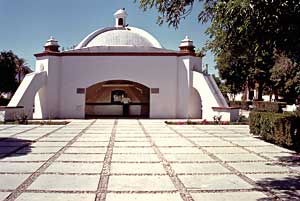 M.C. In the 1930s, Herbert Eugene Bolton, one of the most famous scholars of Spanish-American history, wrote: “Eusebio Francesco Chini was the most characteristic pioneer and missionary of all of North America: explorer, astronomer, cartographer, builder of missions and farms, large cattle rancher and defender of frontiers”. What does the term frontier mean in the history of Jesuit pioneers? And, in particular, in that of Father Kino? M.C. In the 1930s, Herbert Eugene Bolton, one of the most famous scholars of Spanish-American history, wrote: “Eusebio Francesco Chini was the most characteristic pioneer and missionary of all of North America: explorer, astronomer, cartographer, builder of missions and farms, large cattle rancher and defender of frontiers”. What does the term frontier mean in the history of Jesuit pioneers? And, in particular, in that of Father Kino?
D.C. At a conference on Frontiermen for reconciliation, held in Rome from 11 to 14 September 1991, on the 5th centenary of the birth of Saint Ignatius of Loyola and the 450th anniversary of the founding of the Society of Jesus, Cardinal Carlo Maria Martini SJ said:
“If there is a merit that should be recognised of the Jesuits in their history, despite all their flaws and mistakes, it is, I believe, that they have always tried not to testify about that which exists or has already reviewed, but to have constantly felt the invitation to discover, define, reach new horizons of evangelisation and of service to culture and human progress. So the notion of "frontier", which in itself is that of a limit beyond which you do not go or should not go, has always attracted the Jesuits as an obstacle to be overcome, a goal to reach and go beyond.”
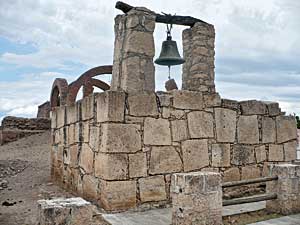 Father Eusebio Francesco Chini conjugated in the term ‘frontier pioneer’ - a term that says not so much about a place of separation and mingling, about conflicts and exchanges, but rather about new horizons, distant lands, other peoples, other cultures - the irrepressible desire to proclaim the Gospel, the unfailing commitment to the promotion and defence of human dignity and freedom, and passion for research and the opening up of new routes, which helped to spread the Word of God among all peoples and to establish the Church in ever more distant regions. Father Eusebio Francesco Chini conjugated in the term ‘frontier pioneer’ - a term that says not so much about a place of separation and mingling, about conflicts and exchanges, but rather about new horizons, distant lands, other peoples, other cultures - the irrepressible desire to proclaim the Gospel, the unfailing commitment to the promotion and defence of human dignity and freedom, and passion for research and the opening up of new routes, which helped to spread the Word of God among all peoples and to establish the Church in ever more distant regions.
M.C. In your book "The Apostle of the Pima", you stress the activity of Chini in defending the dignity of the Indians of Sonora, opposing the compulsory labour in the silver mines imposed on them by the Spanish monarchy imposed on them, and entering into conflict with the other missionaries. What method was adopted by Kino in his mission of evangelization and human promotion of the natives?
D.C. "Without any exaggeration – and this is documented by Jesuit priest Juan Antonio Balthasar, 40 years after the death of Father Chini – we can say that in the 24 years Father Chini spent in Pimería, he did more than all the other missionaries put together who, in the 40 years following his death, succeeded in taking care of only one third of the villages, regions and tribes that the apostolic zeal of Father Chini had attracted, taken care of and rendered willing to submit to the sweet yoke of the Gospel [...]. He was and will always be an example for workers in the vineyard of the Lord, and the prototype that all must aim to imitate: he opened the door, paved the way and went ahead as the guide to follow for those who aspire to increase the glory of God and the conversion of many souls.”
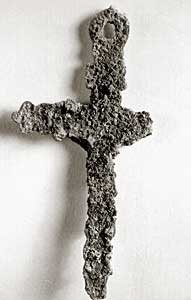 M.C. Chini also never stopped making accurate scientific surveys, which he then put at the service of the Indians and the missionary organization. In addition to rediscovery of the Baja California peninsula, do you recall any other interesting observations? How many geographical plans and maps did he also manage to send to Europe? M.C. Chini also never stopped making accurate scientific surveys, which he then put at the service of the Indians and the missionary organization. In addition to rediscovery of the Baja California peninsula, do you recall any other interesting observations? How many geographical plans and maps did he also manage to send to Europe?
D.C. He was able to draw up 32 precious maps – one very extensive, the others sketches - admired by European geographers, which he placed at the service of the natives, missionaries, settlers and Spanish rulers.
M.C. On 15March 2011 we will celebrate the 300th anniversary of the death of Kino. Despite his merits civil, social and economic merits, Chini was above all a missionary in Baja California, Mexico and Arizona. In 2006, the Archbishop of Hermosillo Sonora handed over all documentation regarding the process of beatification that began in 1971. Will there be the echo that this man deserves to have for his extraordinary quality as a propagator of human and Christian civilization.
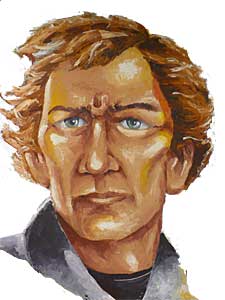 D.C. "The Jesuits print on high the name of China – wrote the historian Herbert E. Bolton – in the long list of apostles of American evangelisation. The cowboys of the South West are amazed and almost sceptical of his well-tested skills in the saddle. Geographers spread his fame as an explorer and cartographer. Italy greets him as a noble but almost forgotten son. Germany is proud of being the inimitable tutor of the Jesuit. Spain points to him as one of the most powerful builders of its colonial empire. Mexico salutes his memory as a great pioneer of its vast and historic West Coast. California praises him as the person who inspired the Jesuit priest Salvatierra, its first famous coloniser. Arizona reveres him as its most prodigious and exemplary pioneer." D.C. "The Jesuits print on high the name of China – wrote the historian Herbert E. Bolton – in the long list of apostles of American evangelisation. The cowboys of the South West are amazed and almost sceptical of his well-tested skills in the saddle. Geographers spread his fame as an explorer and cartographer. Italy greets him as a noble but almost forgotten son. Germany is proud of being the inimitable tutor of the Jesuit. Spain points to him as one of the most powerful builders of its colonial empire. Mexico salutes his memory as a great pioneer of its vast and historic West Coast. California praises him as the person who inspired the Jesuit priest Salvatierra, its first famous coloniser. Arizona reveres him as its most prodigious and exemplary pioneer."
P.S. Domenico Calarco.
With a degree in missiology, he specialised in the study of missionary proclamation in the Americas (16th-17th centuries), and is an expert on Father Eusebio Francesco Chini. He worked for several years as director of the monthly "Xaverian Newsletter" in the United States.
|
 NUMBER 10
NUMBER 10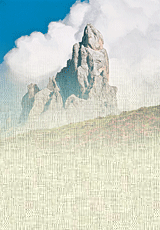
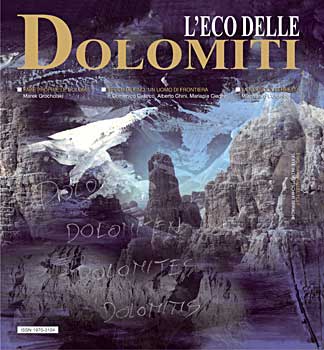

 Domenico Calarco. Eusebio Kino was born in Segno in Val di Non, on 10 August 1645, to Margherita Lucchi and Francesco Chini. He was baptised the same day in the parish of Torra and registered with the surname of his father that he was to change in America to Kino to avoid mispronunciation or misunderstanding. He started schooling in Segno with a private tutor; he attended high school in the Jesuit college at Trento and completed his studies at the University of Hall, near Innsbruck, showing a particular aptitude for natural sciences and mathematics. Having recovered from a serious illness after invoking St. Francis Xavier, and taking a vow to become a Jesuit and a missionary, he studied logic, philosophy and theology at the universities of Ingolstadt, Freiburg and Monaco. On 12 June 1677, he was ordained a priest at Eichstätt in Bavaria. Despite his ardent desire to be sent to China, in March 1678 he was sent to the West Indies and specifically to the missions of New Spain in Mexico. On 12 June 1678, he sailed from Genoa with eighteen other Jesuit missionaries, bound for Cadiz, the port of embarkation of the Spanish royal fleet for the Americas. Various setbacks kept him for nearly three years in Seville, and he reached his overseas destination on 3 May 1681.
Domenico Calarco. Eusebio Kino was born in Segno in Val di Non, on 10 August 1645, to Margherita Lucchi and Francesco Chini. He was baptised the same day in the parish of Torra and registered with the surname of his father that he was to change in America to Kino to avoid mispronunciation or misunderstanding. He started schooling in Segno with a private tutor; he attended high school in the Jesuit college at Trento and completed his studies at the University of Hall, near Innsbruck, showing a particular aptitude for natural sciences and mathematics. Having recovered from a serious illness after invoking St. Francis Xavier, and taking a vow to become a Jesuit and a missionary, he studied logic, philosophy and theology at the universities of Ingolstadt, Freiburg and Monaco. On 12 June 1677, he was ordained a priest at Eichstätt in Bavaria. Despite his ardent desire to be sent to China, in March 1678 he was sent to the West Indies and specifically to the missions of New Spain in Mexico. On 12 June 1678, he sailed from Genoa with eighteen other Jesuit missionaries, bound for Cadiz, the port of embarkation of the Spanish royal fleet for the Americas. Various setbacks kept him for nearly three years in Seville, and he reached his overseas destination on 3 May 1681.  In the early years (1683-1685), he worked as a missionary with ups and downs in Lower California, before being sent to Pimería Alta, a region straddling the state of Sonora (Mexico) and Arizona (USA), which he reached on 13 March 1687. Pimería Alta was considered "the extreme northern outpost of Christianity", with a population of about thirty thousand inhabitants with different characters and morals. For nearly 24 years, Pimería Alta became the field of Father Chini’s apostolate. There he founded 27 missions, promoted the construction of 19 farms and made 50 expeditions/explorations, travelling on horseback or by mule or on foot over about 30,000 km, opening up new trails and making accurate scientific surveys of the region. A man rich in talent, Father Chini was a defender and promoter of the human rights of the natives, and above all, an apostle, witness and servant of the mission of Christ, hope of the world. For Father Chini, walking through the desert was not an escape from men but an important part of his spiritual journey, that is a decisive moment of maturation of his choices and for coming into contact with "the God who saves". Father Chini made his daily journey a song of faith in God. attracted by the "burning bush”, his soul was eager to enjoy the warmth of God, "God as fire, as sun, as light", and he longed to remain increasingly in conversation with the Lord. Animated by love for God and his neighbour, he became "weak with the weak, to win the weak, and all for all, to save someone at any cost". Death took him at Magdalena in Sonora on 15 March 1711 at the age of 65. He died as he lived, in extreme humility and poverty. On his deathbed were two calf skins for a mattress, two blankets of raw wool to cover his body, and his inseparable saddle for a pillow.
In the early years (1683-1685), he worked as a missionary with ups and downs in Lower California, before being sent to Pimería Alta, a region straddling the state of Sonora (Mexico) and Arizona (USA), which he reached on 13 March 1687. Pimería Alta was considered "the extreme northern outpost of Christianity", with a population of about thirty thousand inhabitants with different characters and morals. For nearly 24 years, Pimería Alta became the field of Father Chini’s apostolate. There he founded 27 missions, promoted the construction of 19 farms and made 50 expeditions/explorations, travelling on horseback or by mule or on foot over about 30,000 km, opening up new trails and making accurate scientific surveys of the region. A man rich in talent, Father Chini was a defender and promoter of the human rights of the natives, and above all, an apostle, witness and servant of the mission of Christ, hope of the world. For Father Chini, walking through the desert was not an escape from men but an important part of his spiritual journey, that is a decisive moment of maturation of his choices and for coming into contact with "the God who saves". Father Chini made his daily journey a song of faith in God. attracted by the "burning bush”, his soul was eager to enjoy the warmth of God, "God as fire, as sun, as light", and he longed to remain increasingly in conversation with the Lord. Animated by love for God and his neighbour, he became "weak with the weak, to win the weak, and all for all, to save someone at any cost". Death took him at Magdalena in Sonora on 15 March 1711 at the age of 65. He died as he lived, in extreme humility and poverty. On his deathbed were two calf skins for a mattress, two blankets of raw wool to cover his body, and his inseparable saddle for a pillow. M.C. In the 1930s, Herbert Eugene Bolton, one of the most famous scholars of Spanish-American history, wrote: “Eusebio Francesco Chini was the most characteristic pioneer and missionary of all of North America: explorer, astronomer, cartographer, builder of missions and farms, large cattle rancher and defender of frontiers”. What does the term frontier mean in the history of Jesuit pioneers? And, in particular, in that of Father Kino?
M.C. In the 1930s, Herbert Eugene Bolton, one of the most famous scholars of Spanish-American history, wrote: “Eusebio Francesco Chini was the most characteristic pioneer and missionary of all of North America: explorer, astronomer, cartographer, builder of missions and farms, large cattle rancher and defender of frontiers”. What does the term frontier mean in the history of Jesuit pioneers? And, in particular, in that of Father Kino? Father Eusebio Francesco Chini conjugated in the term ‘frontier pioneer’ - a term that says not so much about a place of separation and mingling, about conflicts and exchanges, but rather about new horizons, distant lands, other peoples, other cultures - the irrepressible desire to proclaim the Gospel, the unfailing commitment to the promotion and defence of human dignity and freedom, and passion for research and the opening up of new routes, which helped to spread the Word of God among all peoples and to establish the Church in ever more distant regions.
Father Eusebio Francesco Chini conjugated in the term ‘frontier pioneer’ - a term that says not so much about a place of separation and mingling, about conflicts and exchanges, but rather about new horizons, distant lands, other peoples, other cultures - the irrepressible desire to proclaim the Gospel, the unfailing commitment to the promotion and defence of human dignity and freedom, and passion for research and the opening up of new routes, which helped to spread the Word of God among all peoples and to establish the Church in ever more distant regions. M.C. Chini also never stopped making accurate scientific surveys, which he then put at the service of the Indians and the missionary organization. In addition to rediscovery of the Baja California peninsula, do you recall any other interesting observations? How many geographical plans and maps did he also manage to send to Europe?
M.C. Chini also never stopped making accurate scientific surveys, which he then put at the service of the Indians and the missionary organization. In addition to rediscovery of the Baja California peninsula, do you recall any other interesting observations? How many geographical plans and maps did he also manage to send to Europe? D.C. "The Jesuits print on high the name of China – wrote the historian Herbert E. Bolton – in the long list of apostles of American evangelisation. The cowboys of the South West are amazed and almost sceptical of his well-tested skills in the saddle. Geographers spread his fame as an explorer and cartographer. Italy greets him as a noble but almost forgotten son. Germany is proud of being the inimitable tutor of the Jesuit. Spain points to him as one of the most powerful builders of its colonial empire. Mexico salutes his memory as a great pioneer of its vast and historic West Coast. California praises him as the person who inspired the Jesuit priest Salvatierra, its first famous coloniser. Arizona reveres him as its most prodigious and exemplary pioneer."
D.C. "The Jesuits print on high the name of China – wrote the historian Herbert E. Bolton – in the long list of apostles of American evangelisation. The cowboys of the South West are amazed and almost sceptical of his well-tested skills in the saddle. Geographers spread his fame as an explorer and cartographer. Italy greets him as a noble but almost forgotten son. Germany is proud of being the inimitable tutor of the Jesuit. Spain points to him as one of the most powerful builders of its colonial empire. Mexico salutes his memory as a great pioneer of its vast and historic West Coast. California praises him as the person who inspired the Jesuit priest Salvatierra, its first famous coloniser. Arizona reveres him as its most prodigious and exemplary pioneer."